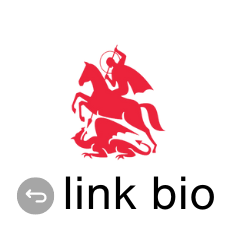Terra Madre

Titolo dell'opera: Terra Madre
Materiale: Calacatta
Dimensioni: 330x75x120 cm
Artista: Nicolò Dell’Erba
Terra Madre
Descrizione:
La scultura "Terra Madre", realizzata in marmo Calacatta vena oro ricavato dai margini scartati di un blocco, è molto più di un'opera d'arte: è un simbolo di resilienza e rinnovamento. Questa creazione trasforma materiali considerati di scarto in una straordinaria espressione artistica che invita a riflettere sull'etica del riutilizzo e sul potenziale nascosto nelle cose scartate e abbandonate.
La mia connessione personale con "Terra Madre" si radica nelle storie di mio nonno, un uomo che ha saputo trasformare gli strumenti di guerra e distruzione in utensili per la costruzione. Durante il dopoguerra, ha utilizzato i cingoli dei carri armati tedeschi per forgiare scalpelli con cui lavorare il marmo. Le sue opere, scolpite con questi strumenti riciclati, oggi abbelliscono le nostre città e accolgono turisti da tutto il mondo, testimoniando come gli oggetti destinati alla distruzione possano invece edificare e abbellire.
"Terra Madre" evoca la stessa trasformazione: dal rifiuto emerge la bellezza, dallo scarto nasce l'arte. Questa opera rispecchia un profondo messaggio filosofico ed etico, come espresso nel Salmo 118:22, dove la pietra scartata dai costruttori diventa la pietra angolare. Anche Papa Francesco, nel suo libro "La mia idea di arte", medita sulla capacità dell'arte di redimere gli scarti, affermando che “l’arte non deve scartare niente e nessuno”, ispirando così una riflessione sulla nostra responsabilità collettiva verso il riuso creativo.
La scultura si collega a questa narrativa personale, fungendo da manifesto visivo che invita a non scartare ciò che a prima vista può sembrare inutile o dannoso. Essa esalta la visione di Walter Benjamin sull'"estetica dell'uso", che celebra il recupero e la reinvenzione degli oggetti scartati come atto di resistenza contro il consumismo e l'oblio. Joseph Beuys, con la sua teoria della "scultura sociale", ha ulteriormente ispirato l'idea che l'arte debba essere uno strumento per il cambiamento sociale, un concetto che "Terra Madre" incarna perfettamente.
Con "Terra Madre", cerco di estendere questo messaggio universale di amore e rispetto per il nostro mondo, proponendo un'arte che non solo guarda al passato per ispirazione ma si impegna attivamente nella costruzione di un futuro più sostenibile. Quest'opera è un ponte tra generazioni, un richiamo a guardare non solo ciò che è visibile, ma anche il valore intrinseco nascosto nelle profondità della terra e nella storia umana.
UK
EARTH MOTHER
Description:
The sculpture "Earth Mother," crafted from golden-veined Calacatta marble sourced from the discarded edges of a block, is much more than a piece of art: it is a symbol of resilience and renewal. This creation transforms materials considered waste into an extraordinary artistic expression, inviting reflection on the ethics of reuse and the hidden potential in discarded and abandoned items.
My personal connection with "Earth Mother" is rooted in the stories of my grandfather, a man who transformed instruments of war and destruction into tools for building. After the war, he used the tracks of German tanks to forge chisels for marble work. His works, carved with these recycled tools, today beautify our cities and welcome tourists from around the world, demonstrating how objects destined for destruction can instead construct and beautify.
"Earth Mother" evokes the same transformation: beauty emerges from rejection, art is born from waste. This work reflects a deep philosophical and ethical message, as expressed in Psalm 118:22, where the stone rejected by the builders becomes the cornerstone. Pope Francis, in his book "My Idea of Art," contemplates the art's ability to redeem waste, stating that “art should discard nothing and no one,” thereby inspiring reflection on our collective responsibility towards creative reuse.
The sculpture connects to this personal narrative, serving as a visual manifesto that invites us to not discard what may at first seem useless or harmful. It enhances Walter Benjamin's vision of the "aesthetics of use," which celebrates the recovery and reinvention of discarded objects as an act of resistance against consumerism and oblivion. Joseph Beuys, with his theory of "social sculpture," further inspired the idea that art should be a tool for social change, a concept that "Earth Mother" perfectly embodies.
With "Earth Mother," I aim to extend this universal message of love and respect for our world, proposing art that not only looks to the past for inspiration but actively engages in building a more sustainable future. This work is a bridge between generations, a call to look not only at what is visible but also at the intrinsic value hidden within the depths of the earth and human history.





